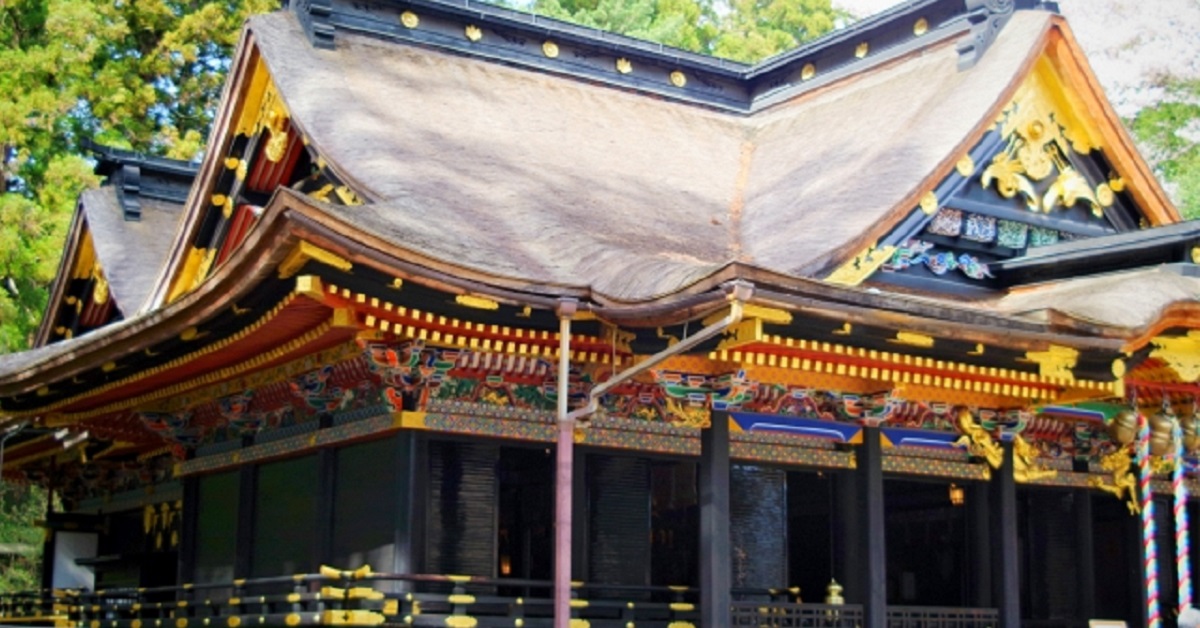Ōsaki Hachimangū in Sendai is home to the Main Hall, Stone Corridor, and Worship Hall, a group of shrine buildings designated as a National Treasure. These structures, built in the early 17th century, showcase the finest craftsmanship of Japanese architecture, combining elegance, spirituality, and historical value in a single sacred site.
What is Ōsaki Hachimangū?
History and Origins
Ōsaki Hachimangū was founded in 1607 by Date Masamune, the first lord of the Sendai Domain. Dedicated to Hachiman, the god of war and protection, the shrine was deeply revered not only by samurai but also by common people. It has remained a symbol of Tōhoku’s culture and spirituality for centuries.
| Era | Event | Key Figure |
|---|---|---|
| Heian Period | Spread of Hachiman worship in northern Japan | Sakanoue no Tamuramaro (legendary link) |
| Sengoku Period | Relocation and reconstruction in Sendai | Date Masamune |
| Edo Period | Completion of Main Hall, Stone Corridor, and Worship Hall | Local master carpenters |
| 1952 (Showa) | Designated a National Treasure | Ministry of Education |
Location and Access
Ōsaki Hachimangū is located in Aoba Ward, Sendai City. It can be reached in about 20 minutes by bus from Sendai Station, making it very convenient for visitors. The approach to the shrine is surrounded by lush greenery, offering seasonal scenery that enhances the shrine’s atmosphere.
Structure and Features of the Main Hall, Stone Corridor, and Worship Hall
A Unified Architectural Style
The shrine complex is built in the style called Gongen-zukuri, where the Main Hall, the Stone Corridor, and the Worship Hall are arranged in a straight line, creating a single continuous sacred space.
| Building | Function | Features |
|---|---|---|
| Main Hall (Honden) | Sacred space enshrining the deity | Brilliant carvings and black lacquer finish |
| Stone Corridor (Ishi-no-ma) | Passage connecting the two halls | Enclosed structure with lacquer decorations |
| Worship Hall (Haiden) | Area for prayers and ceremonies | Magnificent roof and painted ceiling |
Dimensions and Construction Techniques
| Building | Floor Area | Technique | Roof Style |
|---|---|---|---|
| Main Hall | Approx. 24㎡ | Wooden structure, cypress bark roof | Irimoya (hip-and-gable roof) |
| Stone Corridor | Approx. 12㎡ | Earthen-floor structure | Kirizuma (gable roof) |
| Worship Hall | Approx. 36㎡ | Pillar-beam wooden structure | Irimoya (hip-and-gable roof) |
Each building uses different materials and construction methods, showcasing the craftsmanship and creativity of Edo-period architecture.
Artistry and Craftsmanship
Elegance of Black Lacquer and Gold Leaf
The halls are decorated with black lacquer as the base color, combined with gold leaf and polychrome carvings, creating a contrast that embodies the essence of Japanese aesthetics. Depending on the light and time of day, the appearance shifts subtly, impressing every visitor.
Symbolic Carvings
Carvings throughout the structures represent mythological, natural, and auspicious motifs, reflecting both religious beliefs and artistic sensibilities.
| Motif | Meaning | Location |
|---|---|---|
| Dragon | Messenger of gods, protection | Ceiling of Worship Hall |
| Pine, Bamboo, Plum | Good fortune, prosperity | Pillars and doors |
| Cranes & Turtles | Longevity | Entrance to Main Hall |
| Karajishi (Chinese Lions) | Protection from evil | Under the eaves |
Why Was It Designated a National Treasure?
Historical and Architectural Value
Ōsaki Hachimangū is a rare example of early Edo-period shrine architecture preserved in its original form. The structures have survived centuries with minimal alteration, and even repairs are conducted using traditional techniques, preserving authenticity.
Fusion of Religion, Art, and Architecture
The complex is highly valued not only for its technical excellence but also because it embodies Japan’s religious spirit, artistic aesthetics, and architectural innovation. It serves as both a place of worship and a cultural masterpiece.
Visiting Tips
Annual Events and Cultural Experiences
Throughout the year, the shrine hosts traditional Shinto ceremonies and festivals, giving visitors an opportunity to experience Japanese culture directly.
| Festival | Month | Description | Highlights |
|---|---|---|---|
| Matsutaki Festival | January | Burning of old charms and talismans | Purification and renewal for the New Year |
| Setsubun Festival | February | Bean-throwing ritual | Family-friendly tradition |
| Shichi-Go-San | November | Blessing for children’s growth | Visitors can see children in kimono |
| Monthly Ceremony | 1st of each month | Regular prayer rituals | Quiet spiritual experience |
Surrounding Area and Cultural Significance
Connection to Sendai’s History
Ōsaki Hachimangū is closely tied to the history of Sendai. Visiting the shrine is not just about worship but also about exploring the legacy of Date Masamune and Sendai’s cultural heritage. Nearby sites such as Sendai Castle Ruins and Zuihōden Mausoleum complement the experience.
A Shrine Living with the Community
The shrine is not merely a tourist attraction but also a living place of faith for local residents. Seasonal festivals and daily visits by locals keep the shrine deeply connected to community life. For international visitors, it offers insight into Japan’s everyday spirituality.
Conclusion
The Main Hall, Stone Corridor, and Worship Hall of Ōsaki Hachimangū represent the pinnacle of Japanese architecture, artistry, and faith. Each structure has its own charm, yet together they form a harmonious whole that moves the hearts of visitors. For those seeking to experience the spiritual and cultural essence of Japan, a visit to Ōsaki Hachimangū is truly unforgettable.






